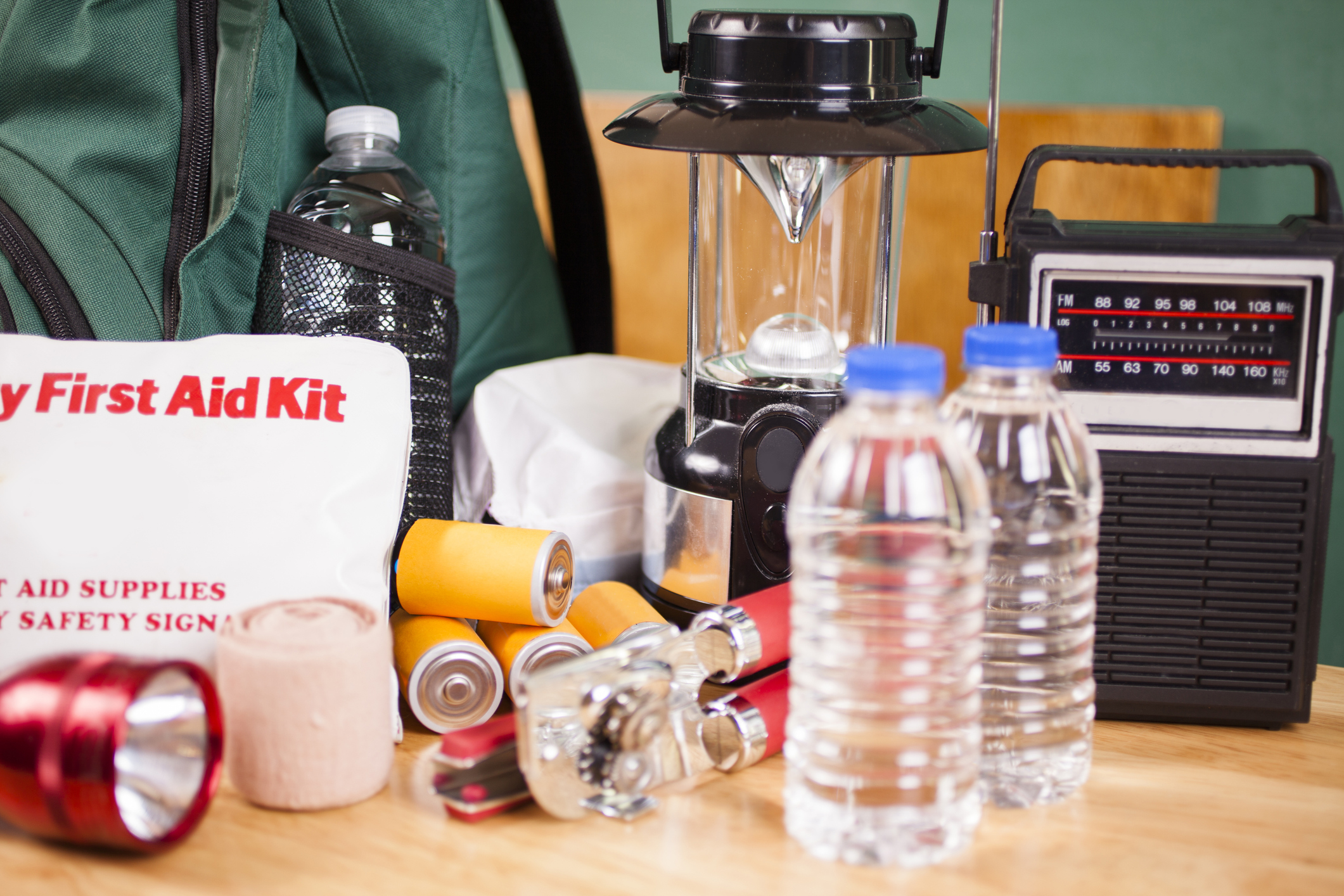10 Survival Items You Need To Keep In Your Home At All Times

Keeping survival items in your home at all times is simply a responsibility that everyone should take upon themselves.
Contrary to what many people think, you don’t have to be an official ‘doomsday prepper’ to recognize that disasters can and do happen and that it’s important to take steps to be prepared for them.
With that in mind, here are the top ten survival items you need to keep in your home at all times:
Drinking Water

First and foremost, you’re going to need a healthy supply of clean drinking water in your home in the event that the water ever quits running. The golden rule to follow is to have at least one gallon per person per day, to be divided between cleaning and drinking purposes.
So to put this into perspective, if you have a family of four, you’re going to need approximately four gallons of water a day, or twenty eight gallons for a full week. You may be able to get by with only half a gallon per person per day, but that’s really skimping it.
Store all water in a cool and dim location, and rotate out once very six months.
In addition, keeping a family water filter and purification tablets on standby will be smart to do as well.
Food

Besides water, you’re going to need a healthy supply of food in your home at all times as well. The best foods to store for emergencies will be food that is long lasting, nutritious, and that doesn’t require freezing or refrigeration.
It also needs to be food that you and your family will eat, so store food with that in mind. Examples of foods you can store include canned meats and vegetables, cereal, flour (mix with water to make bread), white rice, and beans.
Store all food in covered containers in a cool and dim location like your water, and rotate out as appropriate.
Knife

No survival kit is complete without a knife, including the survival kit in your home. Ideally you will have two knives: a large fixed blade knife such as the KA-BAR, and then a smaller folding tactical knife such as those made by Emerson.
Fire Starting Devices (and Candles and Kindling)

Obviously it’s not safe to light a fire inside of your home. But still, basic fire starting items will be an absolute must in your home. Matches and lighters in particular will be the most convenient options.
One of the safest ways to get fire going in your home for warmth and light will be to use candles. You’ll need to be careful about what small children in the home do, but lighting candles can serve as an important source for cooking and keeping you warm.
You should also keep kindling and firewood outside as well so you can get a fire going for warmth or cooking in your backyard if need be.
Flashlight

A powerful LED flashlight, or ideally multiple flashlights, will be another must have item to have in your home survival kit along with plenty of spare batteries. Many people like to buy multiple flashlights and stash them away at strategic locations throughout the home, such as the shed, garage, in the car, in offices, bathrooms, and the kitchen.
Radio (Battery Powered)

A battery powered radio will enable you to maintain communication with the outside world, especially if the phone and internet lines go down. That being said, you can still make communication with the outside world by using radio waves.
A CB or HAM radio will be your best bet. HAM radios definitely offer you far superior range, but they also require a license to own and operate. CB radios will be more convenient and cheaper to buy even if their range is only limited to a few miles.
Important Documents

You’ll also want to keep a variety of important documents in your home as well, and ideally in a secure location such as a safe. This includes your drivers licenses, passports, social security cards, birth certificates, relevant family records, bank account information, insurance policies, your will, an any contacts and deeds you have.
First Aid Kit

A basic but complete first aid kit will also be imperative to have in your home as well since you may no longer have access to professional medical help.
Examples of items that you’ll want to have inside of your first aid kit include prescription medications, bandages, gauze pads, antibiotics, painkillers, tourniquets, tweezers, emergency space blankets, and so on.
Warm Clothes and Blankets

If the electricity goes out and it’s winter time, having a variety of warm clothes and blankets will be absolutely imperative for you.
This includes coats, jackets, sweatshirts, warm socks, hats, gloves, boots, wool blankets, and sleeping bags to name a few things. If it keeps you warm, it’s a good idea to have.
Personal Hygiene and Sanitation Items

This is perhaps the most overlooked category of survival items to have on hand, but you need to have a healthy supply of it should you no longer be able to get resupplied from the store for some time.
Soap, shampoo, toothpaste, toothbrushes, kitchen soap, laundry detergent, deodorant, feminine hygiene products, hand sanitizer, contact lens solution (if applicable) and lots of toilet paper will all be absolute musts.
